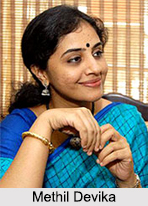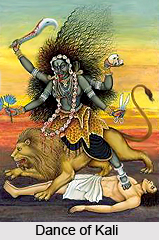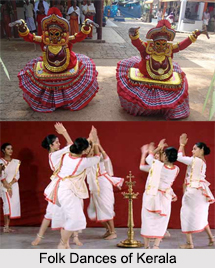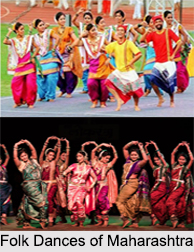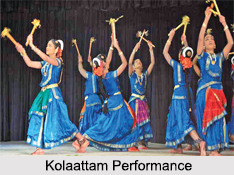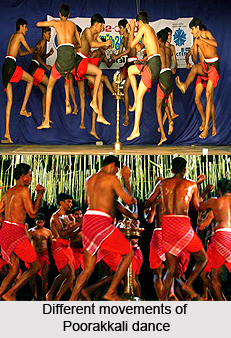 Poorakkali dance is primarily celebrated during the nine-day Pooram festival in Bhagavathy temples across North Malabar of South India. This dance form is performed in the dedication of Goddess Devi. As per the Malayalam calendar, the festival begins with the Karthika asterism and concludes with the Pooram asterism of the month of Meenam that comes in the months of March - April.
Poorakkali dance is primarily celebrated during the nine-day Pooram festival in Bhagavathy temples across North Malabar of South India. This dance form is performed in the dedication of Goddess Devi. As per the Malayalam calendar, the festival begins with the Karthika asterism and concludes with the Pooram asterism of the month of Meenam that comes in the months of March - April.
History of Poorakkali dance
There is no concrete evidence declaring the exact date of the birth of Poorakkali dance.
According to scholars, perhaps its root goes back to an ancient past when learning was not compartmentalised into separate and independently functioning systems. Poorakkali means a combination of ritual, dance and song with discussions on philosophy, grammar etc. Therefore, this dance reflects various aspects of human life through its varied expressions.
Performance of Poorakkali dance
Poorakkali requires specially trained and highly experienced dancers. The performer is expected to know all the techniques and feats of Kalaripayattu, a system of physical exercise formerly in vogue in Kerala. Masculine movements, acrobatic and even martial art steps are integrated in this traditional creative dance form. Hence, the artist has to be physically strong enough to be able to meet the requirements of Poorakkali dance.
Dancers from various communities such as Aasari, Chaliyan, Kollan, Maniyani, Meyon, Moosari, Mukkuvan, Thattan, Thiyyar, etc, participate and showcase their talent through this creative art form. Here, performers clad in lion costumes, stand around huge multitiered lit lamp also known as a "nilavilukku" and dance in eighteen different phase and rhythms, each phase being called a Niram.
The most challenging part of Poorakkali dance is that, along with various arduous steps, the dancers themselves sing and clap in order to remain intact with the rhythm. This type of coordination between body movement and voice requires month long preparation. Poorakkali generally presents the songs of the epics like Ramayana or Bhagavata.
It is not a ritual just to entertain the people rather it aims to spread knowledge. Poorakkali disseminates information and enlightens people with its positive message with the help of dance. Villagers from various places assemble to the temples to participate, enjoy and accumulate knowledge being served by this creative art form.
Places famous for Poorakkali
There are various places in North Malabar that are famous for this art form. Payyanur, Vengara, Trikaripur and Aravath to name a few deserve special mention here. The Panikkars are famous names who have contributed immensely to the survival and enhancement of Poorakkali dance.
This dance form that played a key role in highlighting the state Kerala in the map of India is on the verge of extinction. All efforts are on by the government to keep Poorakkali dance alive.
